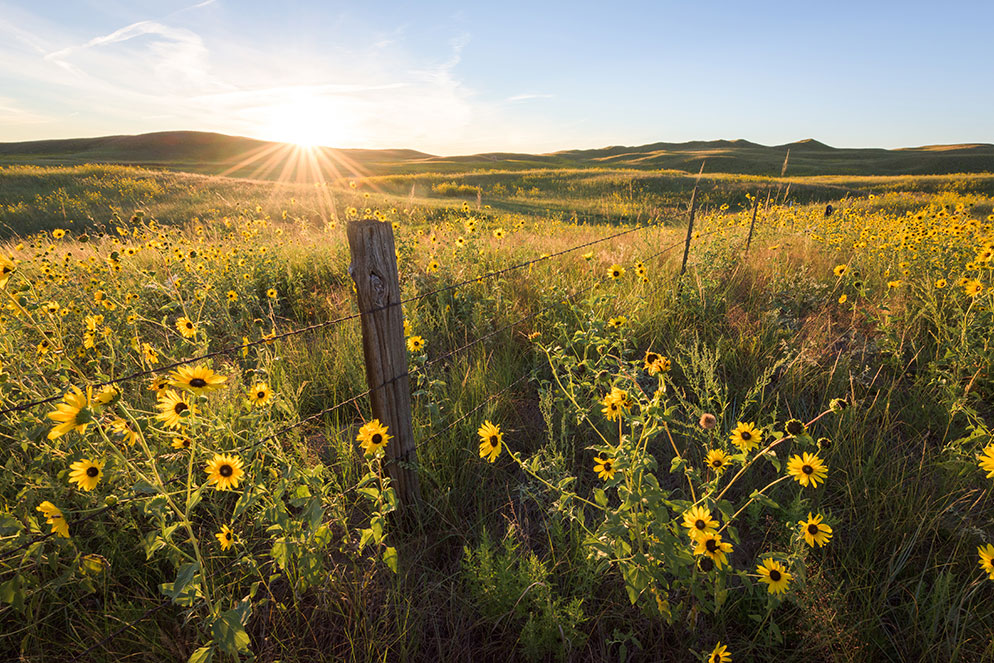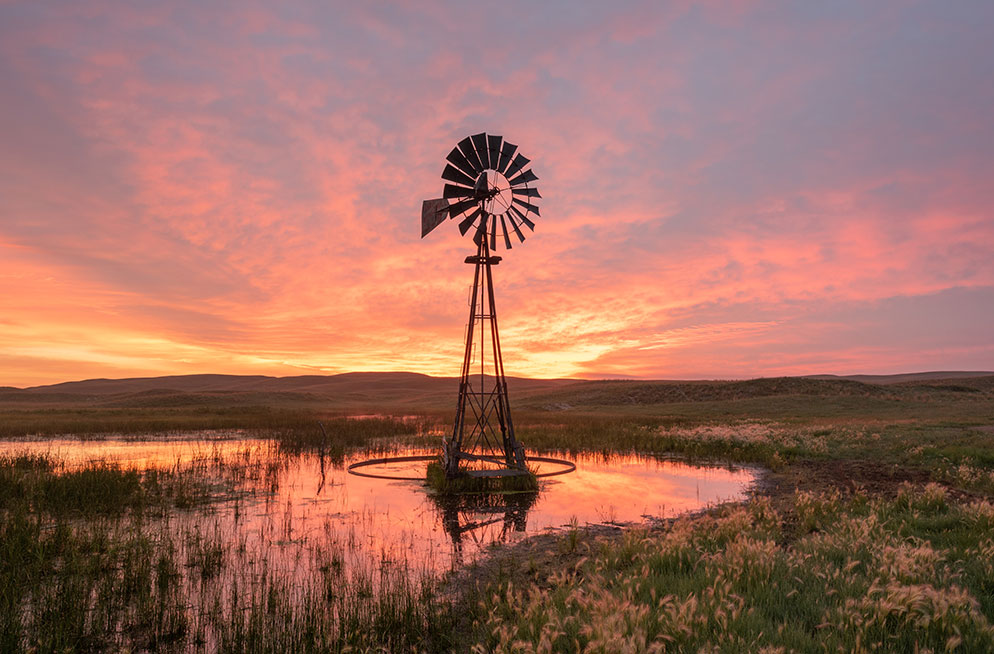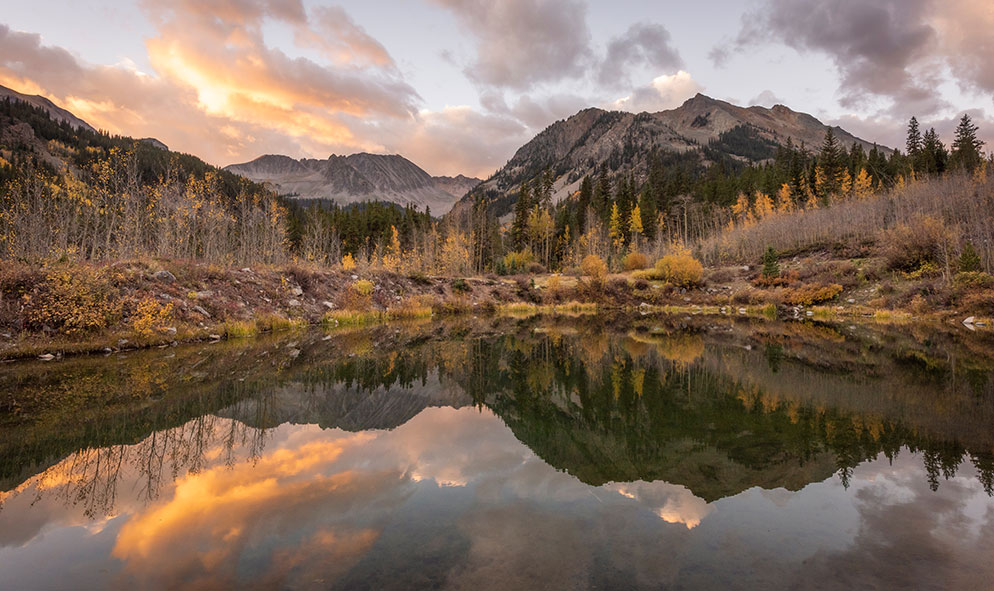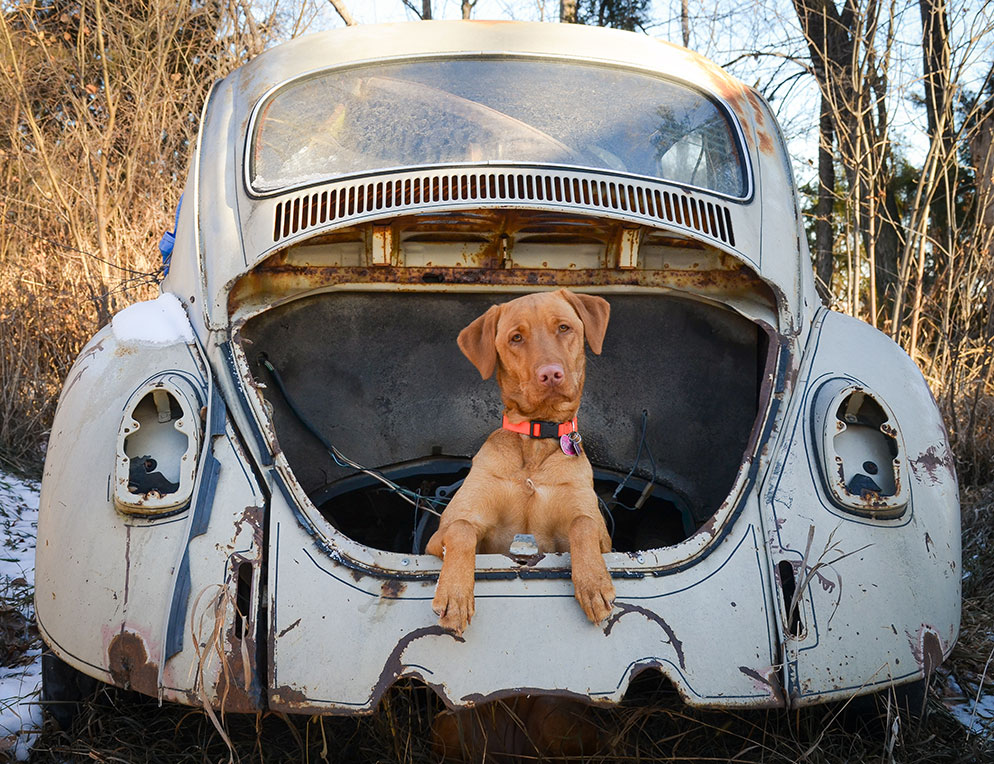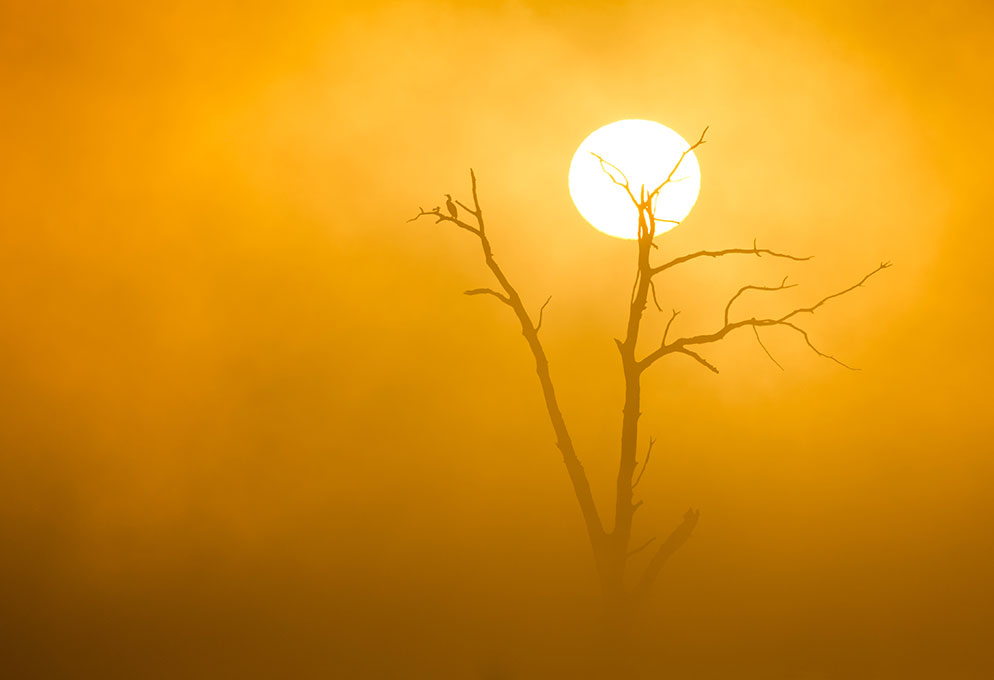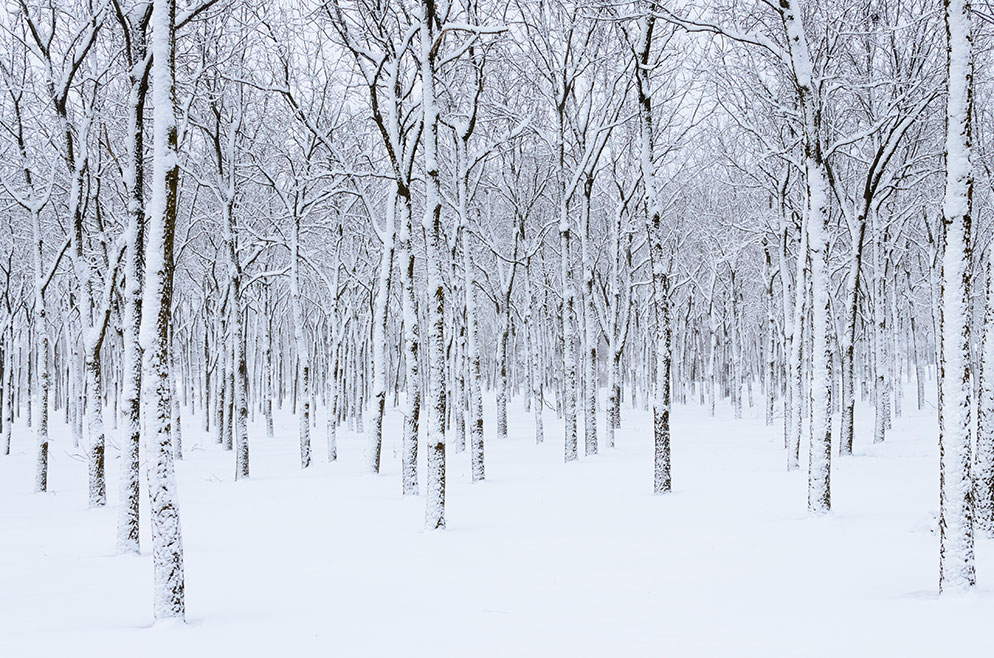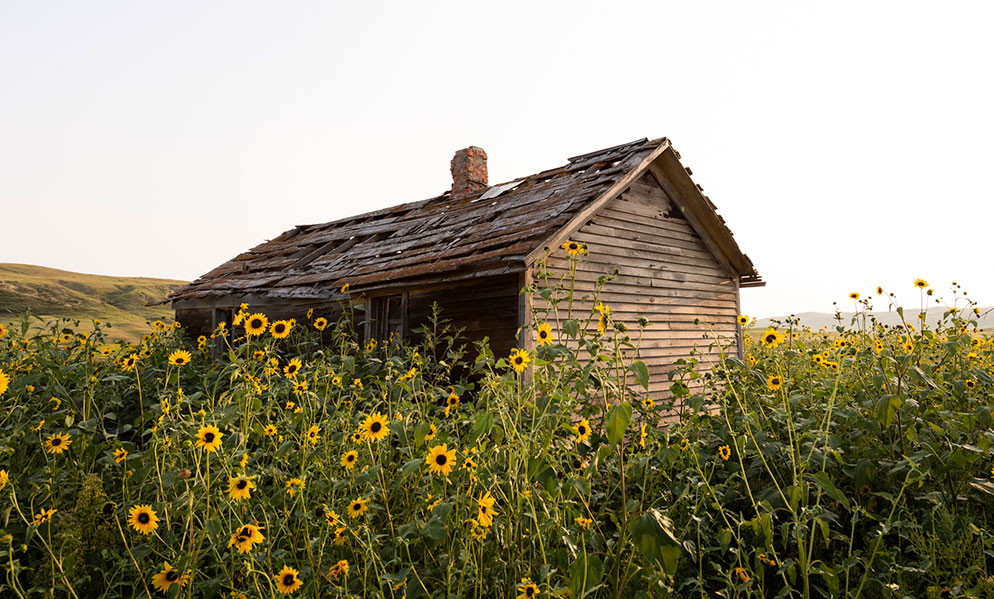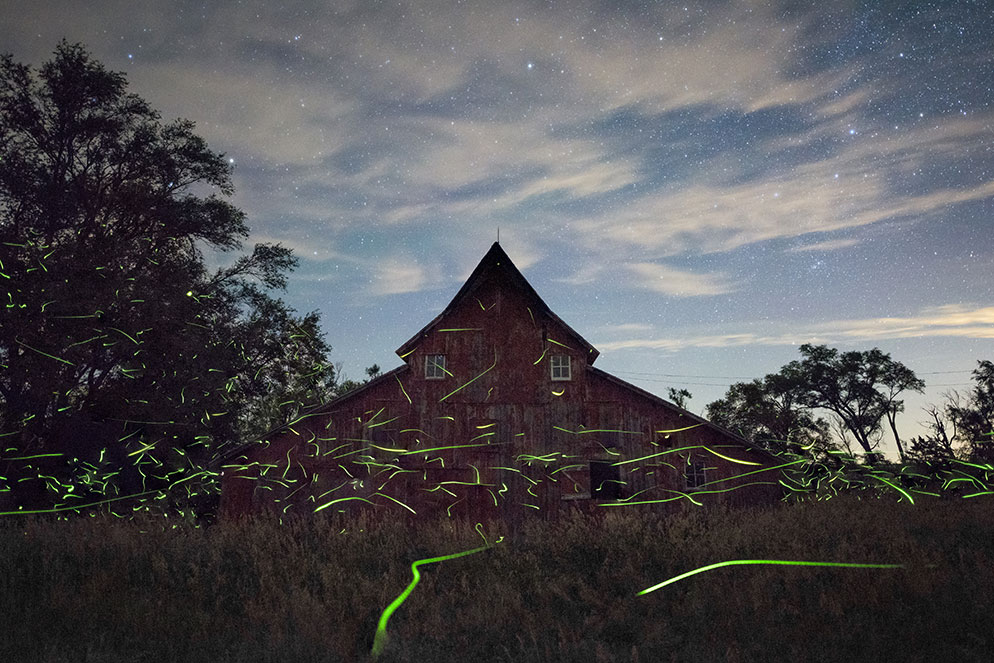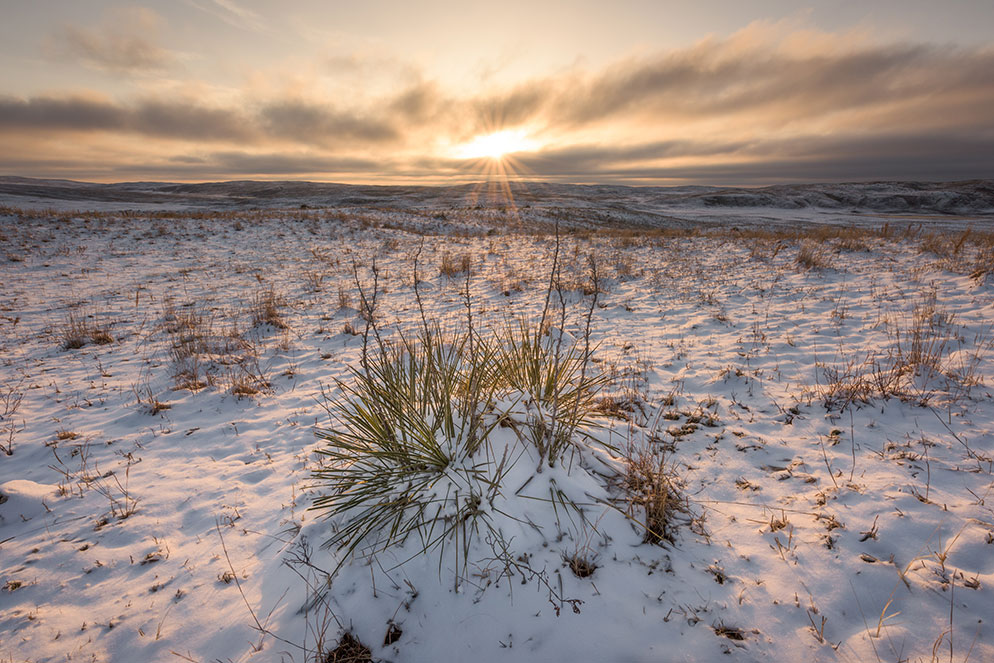A Photographic Journey of the Great Plains
The undulating hills of the Sandhills, blanketed in sunflowers. Besides the occasional windmill to supply cattle with fresh water, wire fencing is about the only other manmade structure you’ll see in this peaceful corner of the world. D810, AF-S NIKKOR 14-24mm f/2.8G ED at 18mm focal length, 1/100 of a second, f/16, ISO 250, Matrix metering, manual exposure.
Erik Johnson’s photographic journey began in 2012 with a smartphone camera and a new puppy. Capturing—by trial and error—and sharing his surroundings and personal experiences, Erik began to venture further from hometown of Lincoln, NE in search of subjects. Of course, his puppy enjoyed these outings to the countryside around Lincoln.
“It was during these outings that I began to notice the beauty of the world around me in a way that I never quite had before”, Erik says. “We were often out at the end of the day when the sun was low on the horizon and the sky would take on breathtaking colors. It was during these walks that I began taking photos of the incredible natural world around me.”
Fast forward one year later and he had outgrown the smartphone camera and was now using his first Nikon camera, a D7000 DSLR and 18-140mm lens that were given to him as an early graduation gift from his mom.
The D7000 fueled Erik’s drive to spend more and more days photographing the countryside. He upgraded to a D810 a few years later, for its low-light capabilities and high resolution.
One of the most dramatic sunrises I’ve witnessed above a lone windmill in the Sandhills. In the background you can see the gentle rolling hills that are a signature of the region. D810, AF-S NIKKOR 14-24mm f/2.8G ED at 24mm focal length, 1.6 seconds, f/16, ISO 160, Matrix metering, manual exposure.
When I’m not exploring my home state, I love to load up my truck and head to higher altitude. This beautiful sunrise was photographed at a small pond near Aspen, CO. While much of the breathtaking scenes of the Rocky Mountains are packed with photographers standing shoulder-to-shoulder, I was completely alone in this moment. Sometimes all it takes is to get off the beaten path. D810, AF-S NIKKOR 14-24mm f/2.8G ED at 19mm focal length, 1/30 of a second, f/16, ISO 640, Matrix metering, manual exposure.
Photography has given Erik the opportunity to blend his passion for the outdoors with a creative medium. “Going out into nature alone is a truly meditative experience and I enjoy being able to bring back a part of that experience and share it with others. The shared experience is not just visual, photography gives me the ability to also share a story or message along with each image,” he explains.
A self-taught photographer, Erik chose the challenging genre of landscape photography. “It’s taught me the virtues of patience and persistence. Good light is a rarity, you won’t come back with incredible photographs each time you leave your front door,” he acknowledges.
Even when he doesn’t end up making images, Erik says the journey itself makes it worthwhile.
“In many ways, photography comes second to the actual experience of just being out in nature,” he says. “A morning cup of coffee on the tailgate of my pickup, throwing a tennis ball to my dog, knocking back a few pages in a good book—even though the memory card might be empty, my soul is filled,” he says.
His favorite subject? Nebraska and the landscape and inhabitants of the Great Plains in general.
My dog Khloe, looking at me inquisitively, wondering why I had her sit in such a strange place. This old Volkswagen rests on a family farm in southeast Nebraska. D7000, AF-S DX NIKKOR 18-140mm f/3.5-5.6G ED VR at 30 mm focal length, 1/160 of a second, f/6.3, ISO 200, Matrix metering, auto exposure.
Erik admires conservation photographer Michael Forsberg, who explains what draws photographers such as Erik to the Great Plains: “It doesn’t knock your socks off at a glance. It’s not the Colorado Rockies, it’s not the Pacific Northwest, it’s not the Grand Canyon. It’s a place that you can’t appreciate from a roadside pullout in five minutes. It’s a place you have to linger for hours, for days, for months, for years or a lifetime. Then it’s like getting to know an old friend. The more time you spend, the more layers you peel away, the more beauty you see. That’s what the Great Plains is, and it can be every bit as remarkable as all these other places.”
“Many see this region as a place you pass through to get to more grand landscapes,” Erik notes, but he sees the beauty they don’t. He says he’s only scratched the surface, “I feel compelled to explore every corner and unearth every story that these places hold.”
When asked how he describes his photographic style, Erik says, “I want my photographs to be real and to portray the experience that I took in with my own eyes.” He strives to “not manipulate the reality of the situation.”
A double-crested cormorant perched alone as the sun rises behind a veil of fog. On any given weekend, this body of water is a nondescript midwestern lake, full of boats and water-skiers buzzing across it. On this early Fall morning, the lake took on an entirely different personality. D7000, AF-S VR Zoom-Nikkor 70-300mm f/4.5-5.6G IF-ED at 300mm focal length, 1/1250 of a second, f/9, ISO 100, Matrix metering, auto exposure.
This grove of walnut trees is not far from my home in southeast Nebraska. On all sides of the grove is farmland. I love the way the evenly spaced trees transport you into an entirely different world. D7000, AF-S NIKKOR 35mm f/1.8G ED, 1/320 of a second, f/8, ISO 100, Matrix metering, auto exposure.
Weather and the Great Plains
“Weather is one of the most dynamic natural forces and no two events are ever the same. You never know what you’ll end up with when a thunderstorm rolls over the plains and brings dramatic light with it,” Erik says. “The best sunsets I’ve ever experienced are those following strong thunderstorms as the clouds break and the sun’s light pierces through and the sun sets on the horizon. Various cloud formations will reflect and filter sunlight in different ways, leading to a varied palette of colors,” he adds.
Erik notes that the process of photographing weather is an experience in itself and may sometimes be a ‘don’t try this at home’ type situation. “There’s a pure adrenaline rush as you barrel down backroads to get into position under a storm—or try to get out of its way.”
Although Erik has logged more than 100,000 miles between two vehicles in his pursuit of photography, he suggests to others that you don’t even have to leave your backyard. Do what you can, when you can. “Beauty can be found anywhere. Any time spent with your camera is progress and a step forward in the craft,” he says.
An old, abandoned home stands surrounded by sunflowers. This house is in the heart of Nebraska’s Sandhills and I can’t help but wonder what life was like for the family that first settled here many years ago. In the sky is a thick haze brought about from wildfires in Wyoming and Montana in August 2018. D810, AF-S NIKKOR 14-24mm f/2.8G ED at 22mm focal length, 1/250 of a second, f/8, ISO 250. Matrix metering, manual exposure.
What the future will bring
Time-lapse, astrophotography, star trails… been there, done that… Erik is interested in further expanding his photographic craft. Video and film photography—two distinct areas—interest him. Video for how it, along with audio and music “can translate emotions in a completely different way than still photography” and film photography because it requires you to slow down.
Erik is one of the new age photography generation, who first discover photography digitally and then desire to learn the valuable basics that are found through using a film camera and being held to the limitations of a single roll of film in the camera at a time.
“No matter the techniques I pursue in the future, the biggest aim of mine is to create a body of work that is both meaningful and beautiful,” he says. “I want to tell the story of the landscape I’m standing in. I want to show why we need to protect these places and give a voice to its inhabitants. I want to create art that is not just visually stimulating but also makes a difference, in a time where we need it the most,” Erik concludes.
Using image editing software, this image is a composite of multiple exposures of firefly trails. This old barn rests abandoned in southeast Nebraska. D810, AF-S NIKKOR 14-24mm f/2.8G ED at 20mm focal length, 20 seconds, f/2.8, ISO 6400 (roughly 50 exposures). Matrix metering, manual exposure.
Evening light breaks through the clouds above a yucca plant in western Nebraska. I've enjoyed photographing this area in each season as the light and the landscape are continually changing. D810, AF-S NIKKOR 14-24mm f/2.8G ED at 15mm focal length, 1/160 of a second, f/16, ISO 160, Matrix metering, manual exposure.

